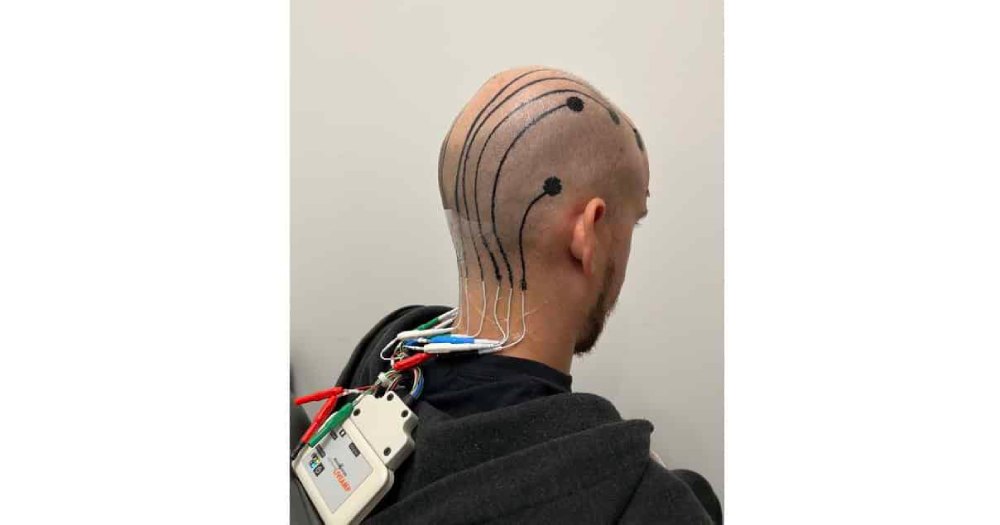Could temporary scalp e-tattoos that scan the brain replace EEGs?

A revolutionary development in brain monitoring may soon replace traditional electroencephalograms (EEGs) forever. Researchers in Austin, Texas, have introduced spray-on electronic tattoos that can effortlessly scan brain activity. This new technology simplifies the EEG process and holds promise for advancing brain-computer interfaces — futuristic tools that enable people to control devices using their thoughts.
How does it work?
Conventional EEGs require a laborious setup: technicians mark points on the scalp, apply sticky gels, and affix electrodes that connect to machines with tangled wires. This method is cumbersome, uncomfortable, and prone to failure as the gel dries out.
The newly developed electronic tattoos eliminate these hurdles. Researchers created a liquid ink made from conductive polymers that can be sprayed directly onto the scalp. The ink effortlessly flows through hair and dries into a thin, flexible film that adheres to the skin. Acting as precise sensors, these tattoos capture brain signals effectively.
The application process is straightforward. Using computer mapping and a specialized inkjet printer, researchers spray the liquid ink onto the scalp. Within minutes, the ink dries into a lightweight, unobtrusive tattoo. No glue, no wires — just an innovative solution to monitor brain activity comfortably and reliably.
As Nanshu Lu, a lead researcher at the University of Texas at Austin, puts it: "Our innovations in sensor design, biocompatible ink, and high-speed printing pave the way for future on-body manufacturing of electronic tattoo sensors."
Why does it matter?
The impact of these spray-on electronic tattoos goes beyond convenience. Tests comparing the tattoos to traditional EEG electrodes revealed significant advantages. After six hours, the gel on traditional electrodes began to dry out, resulting in weaker, noisier signals or outright failure. In contrast, the electronic tattoos performed flawlessly for over 24 hours.
The researchers also redesigned the tattoos to eliminate traditional wires, using printed ink to conduct signals. This innovation ensures consistent performance without interference, and future iterations aim to embed wireless transmitters directly into the tattoos.
Beyond clinical applications, this technology could redefine brain-computer interfaces, making them more accessible and less obtrusive. Current interfaces rely on bulky headsets, but e-tattoos could replace these with sleek, non-invasive designs.
"Our study can potentially revolutionize the way non-invasive brain-computer interface devices are designed," says José Millán, a co-author from the University of Texas at Austin.
The context
For nearly a century, EEGs have been a cornerstone in diagnosing conditions such as epilepsy and traumatic brain injuries. However, the process has remained largely unchanged — until now. The invention of spray-on electronic tattoos represents a leap forward in wearable technology, building on years of research in biocompatible sensors and e-tattoos for monitoring heart rhythms and muscle fatigue.
The researchers envision a future where these tattoos have applications far beyond medical diagnostics. As Lu notes, "E-tattoos represent a new frontier in wearable technology. This is just the beginning of what we can achieve."
From clinical settings to brain-computer interfaces, spray-on electronic tattoos could pave the way for a new era of seamless, accurate, and comfortable brain monitoring.
💡Did you know?
You can take your DHArab experience to the next level with our Premium Membership.👉 Click here to learn more
🛠️Featured tool
 Easy-Peasy
Easy-Peasy
An all-in-one AI tool offering the ability to build no-code AI Bots, create articles & social media posts, convert text into natural speech in 40+ languages, create and edit images, generate videos, and more.
👉 Click here to learn more


